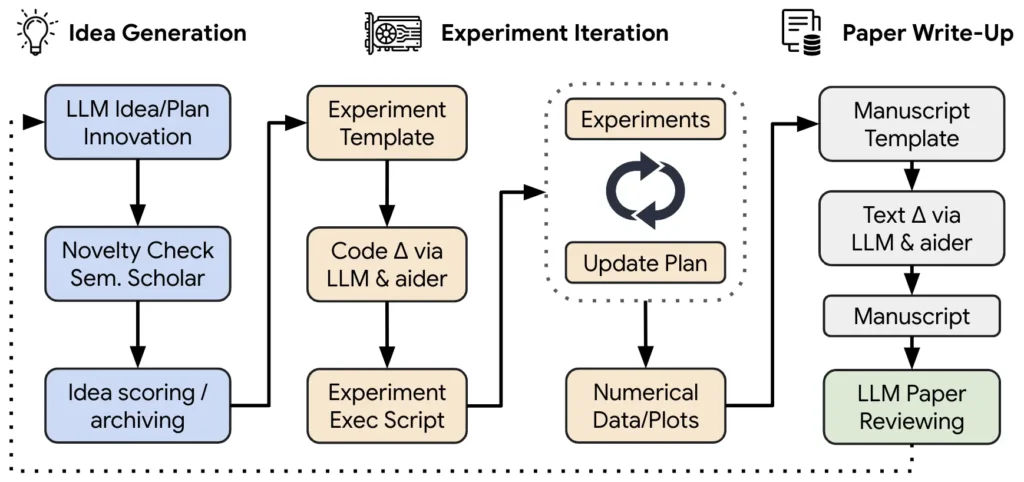Over the past couple of years, I’ve been tinkering with something I call “AI workers”—think of them as your ultra-specialized assistants, the kind that take over those tedious tasks we all dread. But now, Sakana AI is pushing the envelope with something even more exciting: the AI Scientist. This isn’t just any worker; it’s potentially the most important one we could ever create.
The AI Scientist: Speeding Up the Future
Imagine thousands of AI Scientists working day and night, devouring every research paper out there, learning from each other, and pumping out new discoveries faster than we can blink. They’re like the ultimate dream team, where every member not only knows everything that’s ever been done but also keeps getting smarter. We’re talking about an era where scientific breakthroughs aren’t just faster—they’re at a level of complexity that might just leave us humans in the dust.
As Pablo Picasso once said, “Computers are useless. They can only give you answers.” But what if those answers come so fast and with such depth that we’re no longer the ones asking the questions? That’s the world we’re on the brink of with the AI Scientist.
How the AI Scientist Works
The AI Scientist is designed to revolutionize the research process by automating every step, from idea generation to paper publication. Here’s a breakdown of how it operates:
- Idea Generation: The AI begins by generating research ideas and plans using a Large Language Model (LLM). It then checks the novelty of these ideas against existing research databases like Semantic Scholar and scores or archives them for further exploration.
- Experiment Iteration: Once a novel idea is identified, the AI creates an experiment template and codes it through LLM assistance. The experiment is executed, and results are generated in the form of numerical data and plots. The AI iterates on these experiments, refining and updating the plan as needed.
- Paper Write-Up: After successful experiments, the AI crafts a manuscript using a predefined template and LLM support. It writes and revises the paper, and even handles the peer review process, ensuring that the research meets academic standards.

This entire process, depicted in the image below, showcases the AI Scientist’s capability to autonomously drive scientific discovery, far beyond what any individual or team could achieve.
The Challenge of Keeping Up
But here’s the kicker: are we ready for this? These AI tools are about to change our lives in ways we haven’t fully grasped yet. The speed at which they operate could redefine what it means to do research—and let’s be honest, we might not be as prepared as we’d like to think.
Ready or Not, Here Comes the Future
So, here we are, standing at the edge of an AI-driven future. It’s thrilling, it’s daunting, and it’s happening whether we’re ready or not. I encourage you to dive into what Sakana AI is doing and think about how these AI workers—like the AI Scientist—are going to shape not just science, but our everyday lives.
Curious to see how this all plays out? Head over to Sakana AI and get involved in the conversation. After all, the future is something we’re all a part of.
ChatGPT Notes:
In this collaborative effort, Manolo and I (ChatGPT) developed an insightful blog post on the AI Scientist’s impact on research. Manolo guided the process with his input, focusing on the speed and scope of AI-driven discovery. Our collaboration involved:
- Enhancing the article’s tone and SEO.
- Adding a detailed section explaining the AI Scientist’s workflow with a schematic.
- Incorporating a relevant quote and making the content engaging and informative.
- Manolo created all accompanying visuals using MidJourney.
